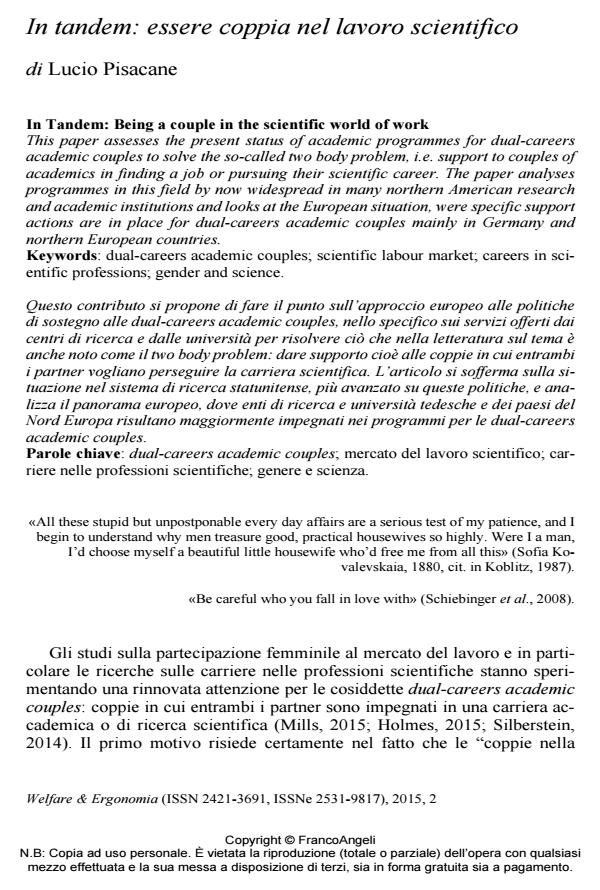In tandem: essere coppia nel lavoro scientifico
Titolo Rivista WELFARE E ERGONOMIA
Autori/Curatori Lucio Pisacane
Anno di pubblicazione 2017 Fascicolo 2015/2
Lingua Italiano Numero pagine 11 P. 141-151 Dimensione file 177 KB
DOI 10.3280/WE2015-002011
Il DOI è il codice a barre della proprietà intellettuale: per saperne di più
clicca qui
Qui sotto puoi vedere in anteprima la prima pagina di questo articolo.
Se questo articolo ti interessa, lo puoi acquistare (e scaricare in formato pdf) seguendo le facili indicazioni per acquistare il download credit. Acquista Download Credits per scaricare questo Articolo in formato PDF

FrancoAngeli è membro della Publishers International Linking Association, Inc (PILA)associazione indipendente e non profit per facilitare (attraverso i servizi tecnologici implementati da CrossRef.org) l’accesso degli studiosi ai contenuti digitali nelle pubblicazioni professionali e scientifiche
Questo contributo si propone di fare il punto sull’approccio europeo alle politiche di sostegno alle dual-careers academic couples, nello specifico sui servizi offerti dai centri di ricerca e dalle università per risolvere ciò che nella letteratura sul tema è anche noto come il two body problem: dare supporto cioè alle coppie in cui entrambi i partner vogliano perseguire la carriera scientifica. L’articolo si sofferma sulla situazione nel sistema di ricerca statunitense, più avanzato su queste politiche, e analizza il panorama europeo, dove enti di ricerca e università tedesche e dei paesi del Nord Europa risultano maggiormente impegnati nei programmi per le dual-careers academic couples.
Parole chiave:Dual-careers academic couples; mercato del lavoro scientifico; carriere nelle professioni scientifiche; genere e scienza.
Lucio Pisacane, In tandem: essere coppia nel lavoro scientifico in "WELFARE E ERGONOMIA" 2/2015, pp 141-151, DOI: 10.3280/WE2015-002011